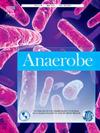Lipoproteins from Bilophila wadsworthia cell wall induce innate immune responses through Toll-like receptor 2
IF 2.6
3区 生物学
Q3 MICROBIOLOGY
引用次数: 0
Abstract
Objectives
Bilophila wadsworthia is a commensal gram-negative anaerobic bacterium in the human gut that is often isolated from patients diagnosed with appendicitis and inflammatory bowel disease. Although previous studies have indicated that B. wadsworthia can cause and/or exacerbate inflammatory diseases, the precise underlying mechanism remains unclear. In the present study, we explored the inflammation-causing virulence factors of B. wadsworthia.
Methods
To identify the virulence factors of B. wadsworthia, we investigated the whole-genome sequences of 25 B. wadsworthia isolates. We then used the publicly available virulence factor database (VFDB) to search for virulence factor genes. We also conducted in vitro and in vivo studies to determine the importance of the selected virulence factors causing inflammation.
Results
Bilophila wadsworthia isolates have 30 common virulence factor genes that contribute to inflammation, invasion of the human body, and effector delivery system. These genes were associated with lipopolysaccharide, capsules, and membrane-associated proteins. Among them, lipoproteins, sometimes act as components of transporter proteins in the bacterial cell wall, upregulated the expression of tumor necrosis factor in murine spleen cells. However, the effect of lipoproteins was attenuated by a Toll-like receptor 2 antagonist. Additionally, orally administered B. wadsworthia and B. wadsworthia-produced lipoproteins worsened colitis in vivo.
Conclusions
Bilophila wadsworthia contains genes that encode various virulence factors. Among these, lipoproteins produced by B. wadsworthia can act as inflammation-inducing factors via Toll-like receptor 2.
蓝藻细胞壁脂蛋白通过toll样受体2诱导先天免疫反应。
目的:wadsworthia Bilophila是人类肠道中的一种共生革兰氏阴性厌氧菌,通常从阑尾炎和炎症性肠病患者中分离出来。虽然先前的研究表明,wadsworthia可引起和/或加重炎症性疾病,但其确切的潜在机制尚不清楚。在本研究中,我们探讨了华氏杆菌引起炎症的毒力因子。方法:对25株华氏杆菌分离株的全基因组序列进行分析,以确定华氏杆菌的毒力因子。然后,我们使用公开可用的毒力因子数据库(VFDB)来搜索毒力因子基因。我们还进行了体外和体内研究,以确定选定的引起炎症的毒力因素的重要性。结果:wadsworthia Bilophila分离株具有30个共同的毒力因子基因,这些基因参与炎症、侵袭人体和效应传递系统。这些基因与脂多糖、胶囊和膜相关蛋白有关。其中,脂蛋白有时作为细菌细胞壁转运蛋白的组分,上调小鼠脾细胞中肿瘤坏死因子的表达。然而,脂蛋白的作用被toll样受体2拮抗剂减弱。此外,口服瓦氏杆菌和瓦氏杆菌产生的脂蛋白使体内结肠炎恶化。结论:华氏Bilophila wadsworthia含有多种毒力因子编码基因。其中,B. wadsworthia产生的脂蛋白可通过toll样受体2作为炎症诱导因子。
本文章由计算机程序翻译,如有差异,请以英文原文为准。
求助全文
约1分钟内获得全文
求助全文
来源期刊

Anaerobe
生物-微生物学
CiteScore
5.20
自引率
8.70%
发文量
137
审稿时长
76 days
期刊介绍:
Anaerobe is essential reading for those who wish to remain at the forefront of discoveries relating to life processes of strictly anaerobes. The journal is multi-disciplinary, and provides a unique forum for those investigating anaerobic organisms that cause infections in humans and animals, as well as anaerobes that play roles in microbiomes or environmental processes.
Anaerobe publishes reviews, mini reviews, original research articles, notes and case reports. Relevant topics fall into the broad categories of anaerobes in human and animal diseases, anaerobes in the microbiome, anaerobes in the environment, diagnosis of anaerobes in clinical microbiology laboratories, molecular biology, genetics, pathogenesis, toxins and antibiotic susceptibility of anaerobic bacteria.
 求助内容:
求助内容: 应助结果提醒方式:
应助结果提醒方式:


